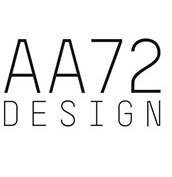.JPG)
The problem is that the laser is great for cutting or etching small areas, which would be fine if I was embossing the cover, whereby the text stands proud. But I wanted it debossed, so the letters are pressed into the cover, which meant that the laser had to etch away the majority of the perspex. It's not really designed to do that sort of thing, so there ended up being deep lines all over what should have been a smooth surface. Obviously these lines would also be pressed into the cover so that simply would not do. Besides, the sheer heat had caused the plate to warp too.
So, Plan B... I went and spoke to Penny in the print room and she said that the plate could be photo-etched. This was something I had not tried before and it sounded a bit like witchcraft - it's sort of like screenprinting but you end up with a metal plate that is suitable for putting through a press. I prepared the artwork onto Folex and gave it to Jane, the print technician. She exposed the artwork onto the plate:
.JPG)
The plate is then placed into a bath of water at exactly 25 degrees Celsius and scrubbed with a toothbrush to get rid of all the stuff that was not masked off by the artwork. Jane told me that you had to be careful not to scrub too hard or your image would also be removed, so I approached the task with extreme caution. After a while I looked at the plate and I had been too gentle, so most of the excess material was still intact. I went at it again with added vigour only to destroy some of the text!
.JPG)
.JPG)
Again, this seems to be a problem with debossing - when you take away the majority of the material, the small amount that is left is incredibly fragile. My only other viable option is to send away to get the plate made professionally. This would cost me at least £30 and I doubt it would get here prior to hand-in on May 14th, so it looks like I will have to screenprint it instead. It's a real shame but perhaps I can have another go at it after the deadline, for my portfolio. The other thing I want to try is spraying the page edges gold. Kate Holland said it was possible, providing I brushed talcum powder between all the pages first to stop them from sticking. This is not a risk I am willing to take so close to hand-in.

.JPG)
.JPG)

